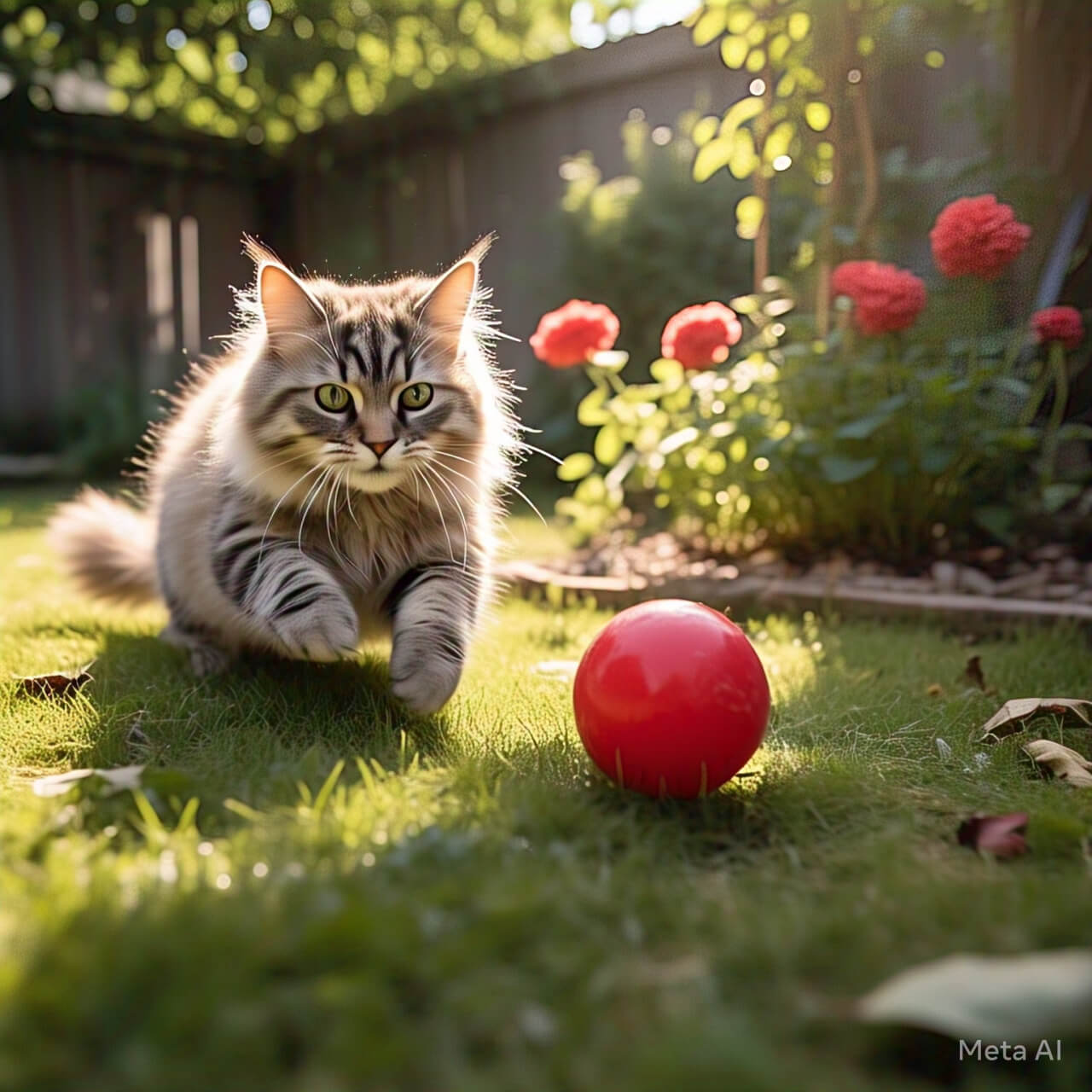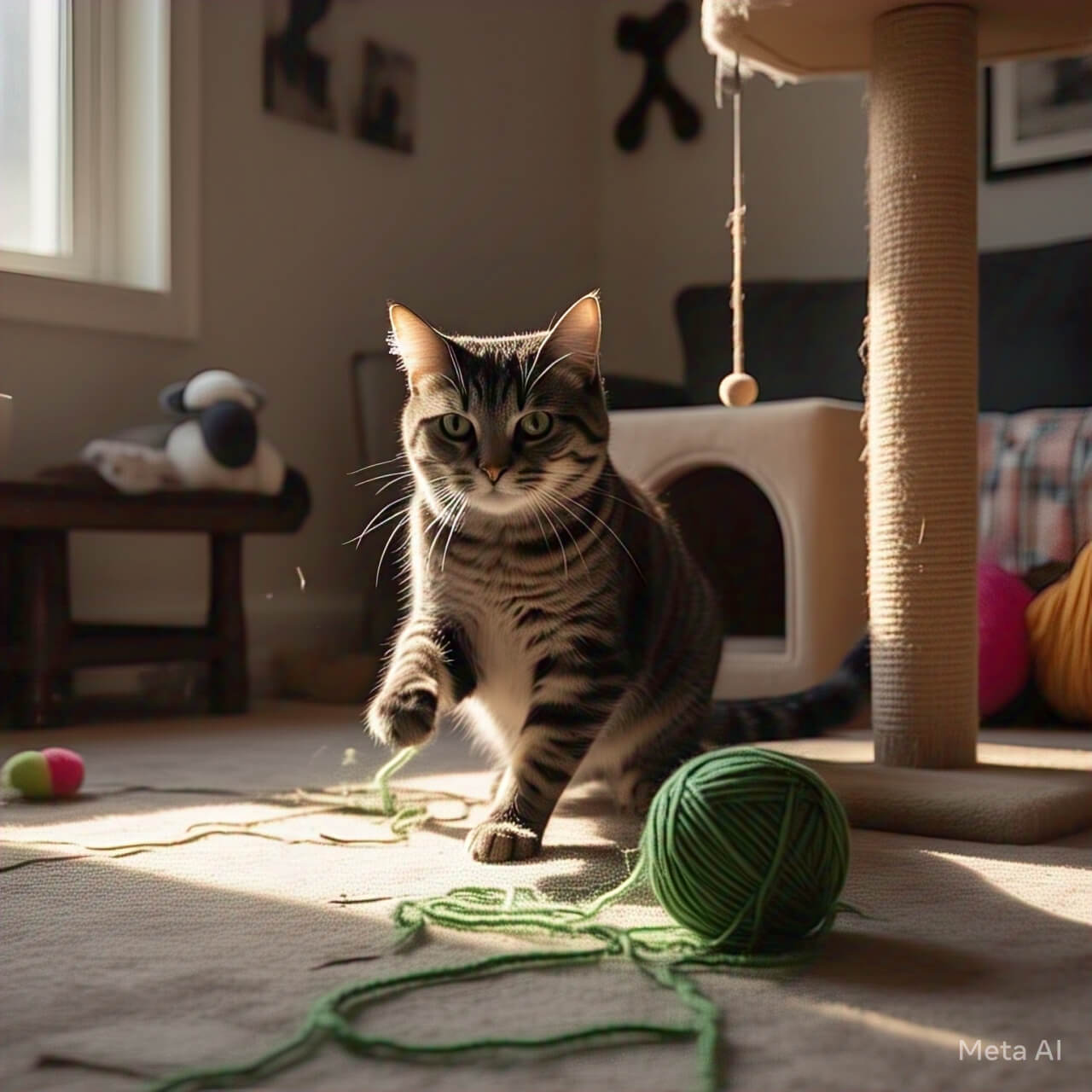How to Teach a Cat to Fetch: Many people think fetch is a game only for dogs, but cats can learn it too! Teaching a cat to fetch takes patience, treats, and the right approach. Cats are naturally curious and love chasing things, so with some training, they can bring objects back to you. Start by choosing a small, lightweight toy your cat likes, such as a crumpled paper ball or a soft mouse.
Toss it a short distance and let your cat chase it. When they pick it up, call them back and reward them with a treat. Repeat this process daily, and soon, your cat may start bringing the toy to you on their own. Remember, every cat learns at their own pace, so stay positive and keep sessions short and fun. With time, your feline friend might just become a pro at fetch.

10 Tips to Teach Your Cat to Fetch
- Use their favorite toy.
- Start with short throws.
- Reward with treats.
- Be patient.
- Keep sessions short.
- Use a clicker for training.
- Praise them often.
- Play when they’re energetic.
- Don’t force them.
- Repeat daily.
1. Understanding Your Cat’s Natural Instincts
Cats love to chase and pounce—it’s in their nature. When teaching fetch, use this instinct to your advantage. Start by observing what toys your cat enjoys batting around. Some cats like feather toys, while others prefer small balls or crumpled paper. Once you know their preference, use that toy for fetch training. Since cats are independent, they may not fetch like dogs, but they can learn to return objects for rewards.
2. Choosing the Right Toy
Not all toys work for fetch. Pick something lightweight and easy for your cat to carry in their mouth. Soft toys, ping-pong balls, or paper balls are great choices. Avoid heavy or large toys that might discourage your cat from bringing them back. Experiment with different textures to see what your cat likes best.
3. Starting with Short Distances
Begin by tossing the toy just a few feet away. Let your cat chase and grab it. When they pick it up, call them back in a happy voice. If they come toward you, reward them with a treat. Gradually increase the distance as they get better at returning the toy.
4. Using Treats as Motivation
Cats respond well to food rewards. Every time your cat brings the toy near you, give them a small treat. This positive reinforcement helps them associate fetching with something good. Over time, they’ll be more likely to repeat the behavior.
5. Keeping Training Sessions Short
Cats have short attention spans. Limit sessions to 5-10 minutes to keep them interested. Stop before they get bored or frustrated. Short, fun sessions work better than long, exhausting ones.
6. Using a Clicker for Better Training
A clicker can help mark the exact moment your cat does something right. Click when they pick up the toy, then reward them. This helps them understand what behavior earns them a treat.
7. Praising Your Cat Often
Cats respond to positive attention. Use a happy, excited voice when they bring the toy back. Pet them or give them a treat to reinforce good behavior.
8. Playing When Your Cat is Energetic
Choose times when your cat is playful, like after a nap or in the evening. A sleepy cat won’t be interested in fetch.
9. Never Forcing Your Cat to Play
If your cat walks away, let them. Forcing them will make them dislike the game. Try again later when they’re in the mood.
10. Being Consistent with Training
Practice fetch daily. Repetition helps your cat learn faster. Even short, regular sessions will improve their skills over time.

FAQs About Teaching a Cat to Fetch
| Question | Answer |
|---|---|
| Can all cats learn to fetch? | Most can, but some may not be interested. |
| What’s the best toy for fetch? | Lightweight toys like paper balls or small mice. |
| How long does training take? | It depends, but weeks of practice may be needed. |
| What if my cat doesn’t bring the toy back? | Use treats to encourage them. |
| Should I punish my cat if they don’t fetch? | No, always use positive reinforcement. |
By following these steps, you can teach your cat to fetch and enjoy a fun new game together.









